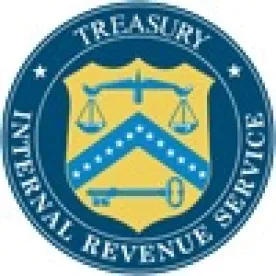On October 5, 2016, the Treasury Department and Internal Revenue Service (“IRS”) published much-anticipated final (available here), temporary (available here) and new proposed (available here) regulations providing guidance under Internal Revenue Code sections 707 and 752 on partnership disguised sales and the allocation of partnership liabilities. These new regulations significantly limit the ability of partners to engage in certain partnership transactions that previously permitted the receipt of cash on a tax-deferred basis. The new regulations impact many common partnership transactions engaged in by private equity firms and MLP sponsors.
DISGUISED SALES
SECTION 707 TEMPORARY REGULATIONS
Previously, a partner could, as part of the same transaction, contribute property with a value in excess of basis (i.e., "built-in gain" property) to a partnership and receive a debt-financed distribution of cash in a tax-deferred transaction by guaranteeing the partnership debt that funded the distribution. That is, the receipt of cash was not treated as part of a currently taxable sale of the contributed property to the partnership to the extent the distributed cash did not exceed the partner’s allocable share of partnership debt that funded the distribution, which generally was the full amount of any debt guaranteed by such partner.
Leveraged Partnership Structure Curtailed
The new temporary regulations under section 707 limit the use of the leveraged partnership structure by treating all debt as nonrecourse for purposes of applying the disguised sale rules. Under the temporary regulations, the contributing partner’s share of the related partnership debt is determined solely in accordance with the partner’s allocable share of partnership profits. The normal nonrecourse debt allocation rules, which permit taxpayers to use the significant item, alternative or additional methods for allocating nonrecourse debt, do not apply for purposes of the disguised sale rules.
Accordingly, a distributee partner’s guarantee or other similar arrangement will no longer cause the debt related to the debt-financed distribution to be allocated solely to such partner and the cash proceeds in excess of the partner’s allocable share of such debt will be treated as received as part of a taxable sale of a portion of the property to the partnership.
Effective Date
The section 707 temporary regulations described above are effective for any transaction with respect to which all transfers occur on or after January 3, 2017, ninety days after publication of the temporary regulations in the Federal Register.
SECTION 707 FINAL REGULATIONS
Previously, a partner could contribute built-in gain property subject to a qualified liability that was used to finance the acquisition or construction of the property to a partnership in exchange for an interest in the partnership, cash and the assumption of the liability by the partnership, all on a tax-deferred basis. The partner could exclude from proceeds of the sale of the property both (i) cash (or a portion thereof) received as a reimbursement of certain preformation capital expenditures with respect to the property, and (ii) an amount equal to the liability assumed (a “double dip” transaction).
Elimination of the Double Dip Transaction
The final section 707 regulations effectively eliminate the so-called double dip by providing that a cash distribution received by a partner from the partnership cannot be excluded from proceeds received in connection with the sale of the property as a reimbursement of certain preformation capital expenditures to the extent that such cash distribution was funded with the proceeds of debt assumed by the partnership in excess of such partner’s allocable share of such partnership liability. Preformation capital expenditures will be treated as funded with the proceeds of debt to the extent the proceeds are either traceable to the capital expenditures under the regulations or were actually used to fund the capital expenditures.
Other Changes
The final regulations include additional changes to the exclusion for reimbursement of preformation capital expenditures and the qualified liabilities exception, including:
(i) clarifying that the 20% limitation and the 120% test in the reimbursement of preformation capital expenditures exclusion from sale proceeds generally apply on a property-by-property basis,
(ii) providing for a “step-in-the-shoes” rule for purposes of (A) applying the capital expenditures reimbursement exclusion from sale proceeds in the case of tiered partnerships and in the case of property received by a transferor partner in certain nonrecognition transactions and (B) determining whether a liability is a qualified liability when a partner acquires property, assumes a liability, or takes property subject to a liability from another person in connection with a nonrecognition transaction, and
(iii) permitting a small amount of nonqualified liabilities to be transferred to a partnership without tainting a portion of otherwise qualified liabilities.
Effective Date
The section 707 final regulations are effective immediately.
ALLOCATION OF PARTNERSHIP LIABILITIES
SECTION 752 TEMPORARY REGULATIONS
Under section 752, if a partner bears the economic risk of loss with respect to a partnership liability, such partnership liability is treated as a recourse liability with respect to such partner. Such partner’s tax basis in its partnership interest will be increased by the amount of such recourse liability. Distributions of cash from a partnership to a partner generally are not taxable to the distributee partner to the extent such cash distributions do not exceed the distributee partner’s tax basis in its partnership interest.
Bottom-Dollar Payment Obligations Not Respected
Consistent with the 2014 proposed regulations, the temporary regulations under section 752 do not respect a bottom-dollar payment obligation, whereby a partner may be responsible only for the last dollars of a debt obligation, as a payment obligation for purposes of determining a partner’s share of liabilities. Accordingly, a bottom-dollar payment obligation will not cause the related liability to be treated as a recourse liability with respect to the partner bearing such obligation, and the tax basis of such partner’s interest in the partnership will not be increased by the amount of such obligation, unless, and to the extent, the rules for allocation of nonrecourse liabilities otherwise would allocate the liability to such partner.
Under the section 752 temporary regulations, the term “bottom-dollar payment obligation” generally includes any payment obligations in respect of which the obligor is not liable for the full amount of the debt obligation. Any arrangement to convert a single liability into multiple liabilities pursuant to a plan and with the principal purpose of avoiding a bottom-dollar payment obligation will be treated as creating a bottom-dollar payment obligation. The section 752 temporary regulations specifically exclude from the definition of bottom-dollar payment obligation (i) a payment obligation with a cap that otherwise is not treated as a bottom-dollar payment obligation, (ii) a vertical slice guarantee stated as a fixed percentage of every dollar of the liability to which such payment obligation relates, or (iii) any payment obligation with a right of proportionate contribution from other partners who are co-obligors with joint and several liability. In addition, the section 752 temporary regulations provide that a bottom-dollar payment obligation may be respected for purposes of section 752 if, taking into account the indemnity, reimbursement agreement or similar arrangement, the partner or a related person is liable for at least ninety percent of the partner’s initial payment obligation.
The temporary regulations require partnerships to disclose bottom-dollar payment obligations, the amount of such obligations and the parties to such payment obligations. Further, to establish the exception for liabilities for which a partner is liable for at least ninety percent of the payment obligation, the disclosure must delineate facts and circumstances supporting such exception.
Effective Date
The section 752 temporary regulations apply to liabilities incurred or assumed by a partnership and payment obligations imposed or undertaken with respect to a partnership liability on or after October 5, 2016. The section 752 temporary regulations provide a transition rule pursuant to which a partner whose allocable share of partnership liabilities under Treasury Regulation section 1.752-2 exceeds its adjusted basis in its partnership interest as of October 5, 2016 can continue to apply the existing regulations with respect to such partnership liability for a seven-year period.
SECTION 752 PROPOSED REGULATIONS
The IRS issued proposed regulations in 2014 that generally provided that a payment obligation with respect to a partnership liability (i) would not be respected as creating a recourse liability under section 752 unless specific factors all were satisfied, and (ii) would be respected only to the extent of the net value of a partner or related person as of the allocation date.
Determining Recourse Liabilities For Purposes of Section 752
Departing from the approach of the 2014 proposed regulations requiring the satisfaction of specific factors for a payment obligation to be respected for purposes of allocating liabilities, the new proposed regulations provide for an anti-abuse rule based on facts and circumstances to determine if there is a plan to circumvent or avoid the payment obligation, with a non-exclusive list of the factors that may indicate such a plan. The factors include whether (i) there are contractual restrictions protecting the likelihood of payment, (ii) the partner or related person is required to disclose its financial condition, (iii) the term of the payment obligation ends prior to the term of the partnership liability, or the partner or related person has a right to terminate its payment obligation, (iv) the obligor holds money or other liquid assets exceeding the relevant liabilities, (v) the payment obligation permits the creditor to pursue payment promptly following a default, (vi) in the case of a guarantee, the terms of the liability would be substantially the same had the partner or related person not agreed to provide the guarantee, and (vii) the creditors receive executed documents with respect to the payment obligation.
In addition, the new section 752 proposed regulations remove the net value requirement and add a presumption that evidence of a plan to circumvent or avoid an obligation is deemed to exist if the facts and circumstances indicate that there is not a reasonable expectation that the obligor, which includes disregarded entities (including grantor trusts), will have the ability to make the required payments if the payment obligation becomes due and payable.
Effective Date
The proposed regulations will be effective on the date regulations finalizing these rules are published in the Federal Register, although partnerships and their partners are permitted to rely on the proposed regulations prior to their publication date (except for certain rules applying in the context of disregarded entities under Treasury Regulation section 1.752-2(k)).






 />i
/>i

